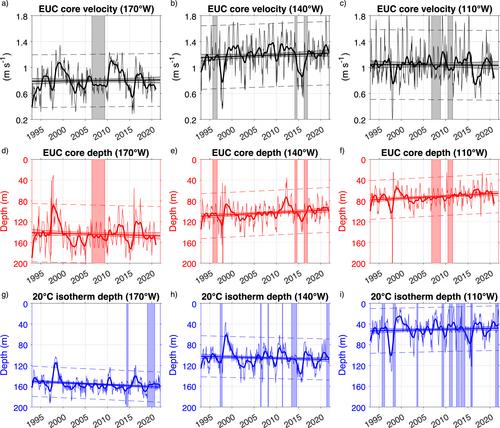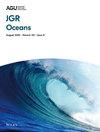Strengthening of the Equatorial Pacific Upper-Ocean Circulation Over the Past Three Decades
Abstract
Thirty years (1993–2022) of concurrent satellite and in-situ observations show a long-term strengthening of the equatorial Pacific upper-ocean circulation. Enhanced southeasterly and cross-equatorial winds have caused an annual mean, basin-wide acceleration of the equatorial westward near-surface currents by ∼20% and an acceleration of poleward flow north (south) of the equator by ∼60% (∼20%). Additional moored velocity data reveal a deepening of the Equatorial Undercurrent (EUC) core at 170°W and significant shoaling at 140°W and 110°W, but no significant changes in EUC core velocity. The strongest subsurface zonal velocity trends are observed above the EUC core in the central to eastern Pacific and occur before and after the seasonal maximum of EUC core velocity, causing enhanced upper-ocean vertical current shear. Consistent with trends of the 20°C isotherm depth along the equatorial Pacific, a significant basin-wide steepening of the equatorial thermocline is observed. Both the accelerating equatorial current system and the enhanced thermocline slope are consistent with an observed steepening of the zonal sea surface height gradient due to increased wind-driven westward mass transport at the surface. During February-March, both surface and subsurface currents along the equator show eastward velocity trends, in contrast to westward near-surface current trends during the remainder of the year. The trend reversal is attributed to both a long-term shift in equatorial Kelvin wave activity and to the impact of strong interannual variability due to El Niño Southern Oscillation and other modes of natural variability on decadal to multidecadal time scales.


 求助内容:
求助内容: 应助结果提醒方式:
应助结果提醒方式:


